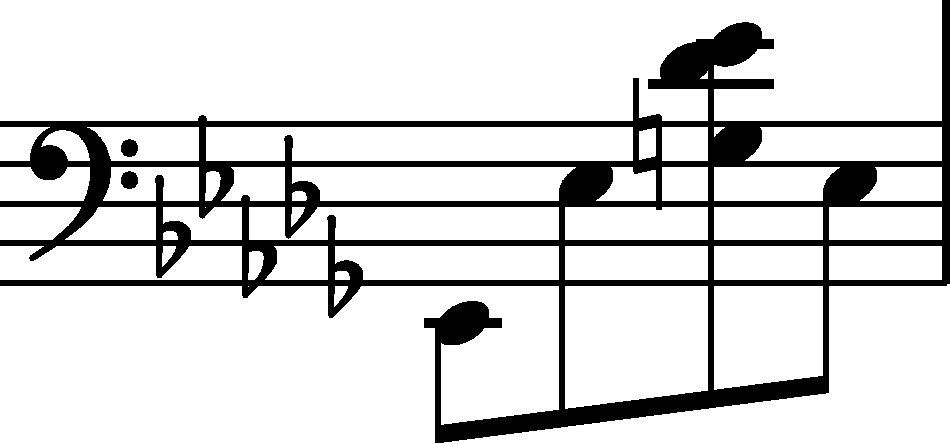



|
b. 7
|
composition: Op. 28 No. 15, Prelude in D♭ major
..
Following in the footsteps of the reviser of EE2, in the main text we suggest adding an additional crotchet stem next to a category imprint: Differences between sources; Editorial revisions issues: EE revisions |
|||||
|
b. 8
|
composition: Op. 28 No. 15, Prelude in D♭ major
..
The crossing-out visible in A reveals that the 1st quaver in the 2nd half of the bar was initially d category imprint: Corrections & alterations; Source & stylistic information issues: Corrections in A , Deletions in A , Accompaniment changes |
|||||
|
b. 9
|
composition: Op. 28 No. 15, Prelude in D♭ major
..
In the main text we give identical indications entered into FED and FES – a mark indicating that f1 should be performed by the R.H. and two fingering digits concerning the L.H. category imprint: Differences between sources issues: Annotations in teaching copies , Annotations in FED , Annotations in FES |
|||||
|
b. 10-11
|
composition: Op. 28 No. 15, Prelude in D♭ major
..
In A one can see that the first two quavers in b. 11 were crossed out; they were initially f2-d category imprint: Corrections & alterations; Source & stylistic information issues: Corrections in A , Errors of A , Deletions in A |
|||||
|
b. 11-17
|
composition: Op. 28 No. 15, Prelude in D♭ major
..
In A one can see that Chopin was reducing the range of the accompanying figures in b. 11 and 17. In particular, he moved the bass note in the 2nd half of b. 11 an octave higher: category imprint: Corrections & alterations; Source & stylistic information issues: Corrections in A , Deletions in A , Accompaniment changes |

 in
in  , while in b. 17, which was initially identical to b. 15, he replaced both bass F notes with dyads in the middle register.
, while in b. 17, which was initially identical to b. 15, he replaced both bass F notes with dyads in the middle register.